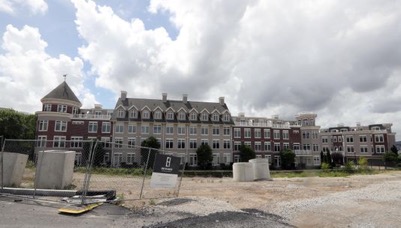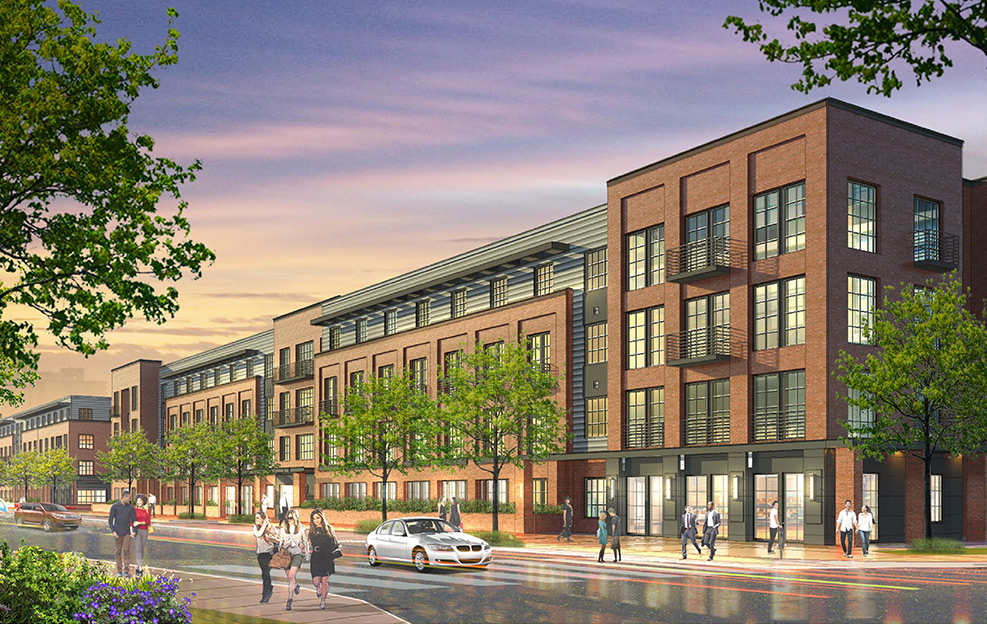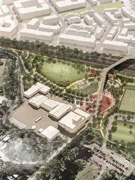August 09, 2018
Sleepy Hollow explores Edge-on-Hudson development as change maker
Richard Liebson
Rockland/Westchester Journal News
A look at Edge-on-Hudson, where Toll Brothers has signed an agreement to purchase Phase 1 to build 306 units of housing at the development project on the former General Motors assembly plant site in Sleepy Hollow

(Photo: Seth Harrison/The Journal News)
SLEEPY HOLLOW – A report released this week offers a number of suggestions on how to use the massive Edge-on-Hudson development on the former General Motors site as a vehicle for revitalizing the village.
A vision for Sleepy Hollow: Managing Change & Building for Diversity,” was put together by the nonprofit Urban Land New York Institute and the Urban Land Institute Westchester/Fairfield. The study was commissioned by the village Board of Trustees last year.
The goal, according to the report, is to identify strategies to connect Edge-on-Hudson with the village and encourage investment in the downtown “that celebrates Sleepy Hollow’s diversity and history while welcoming new residents and not pushing out lower income households.”
Village leaders also “want to encourage new retail businesses and multi-family residential housing along Beekman Avenue,” the report says.
Edge-on-Hudson is a mixed-use mega-development on the 70-acre former GM site along the Hudson River. Phase one, being built by Toll Brothers, involves construction of 306 apartments on 15 acres. When the entire project is finished it will include parks and recreation space, stores, offices and a 140-room hotel.
The report was based on extensive study and analysis of Sleepy Hollow by a ULI Technical Assistance Panel, comprised of members assembled specifically for their expertise in the issues facing the village.
Kim Morque, chair of the panel and president of Spinnaker Real Estate Partners, said “Sleepy Hollow’s growing population and location… make it ideally positioned for new development and investment.”

Rendering of Edge-on-Hudson’s Phase 1 at the former General Motors assembly plant site in Sleepy Hollow. (Photo: Submitted)
The Sleepy Hollow panel spent two days in the village, studying conditions and demographics and interviewing residents, merchants, officials and other stakeholders.
“I was very excited, just to have the opportunity to work with a group of outside, independent experts about the challenges we’re facing,” Mayor Ken Wray said of the study. “They were really enthusiastic about it, and the report is a great tool for us right now. We’re in the middle of updating our comprehensive plan, and this really reaffirms a lot of what we’ve been looking at.”

Sleepy Hollow Mayor Ken Wray (right) discusses village’s potential with members of an Urban Land Institute New York Technical Assistance Panel. (Photo: Steve Lipofsky)
Wray said the village hopes to finish up the comprehensive plan overhaul next year and will most likely incorporate some of the ULI suggestions.
The report’s recommendations for the next one- to five years include:
- Creation of a Beekman Avenue merchant association or Business Improvement District.
- Encourage food trucks, cars and pop-up businesses to fill vacant store fronts and spaces.
- Institute a building facade improvement program, improve lighting, repair sidewalks, replant trees.
- Create a shuttle system to connect Edge-on-Hudson, Beekman Avenue and both the Tarrytown and Philipse Manor Metro-North stations. Also establish bike routes that can connect to the railroad stations, and make the village more bike and pedestrian friendly.
- Move the Farmers Market at Patriot’s Parkto a downtown location. That would have to be negotiated with Tarrytown, which shares the market.
- Create a park at Beekman Avenue and Cortlandt Street.
- Reach out to shop owners in the Latino community with detailed explanations and workshops on incentives that can help them grow. Constantly communicate with various civic leaders and stakeholders to let people know what’s going on and to get their feedback and earn their trust.
A frequent, reliable shuttle system and bike routes could help alleviate Beekman Avenue traffic, the report says. Parking problems could also be somewhat addressed by considering the use ofWL Morse Elementary, Sleepy Hollow High School and the Phelps Hospital Northwell Health parking areas during evenings and weekends.
Wray said that Edge-on-Hudson is already required to create a shuttle system to the railroad stations and that “expanding that to Beekman, Cortlandt and other areas of the village would be a simple thing to do.
He said the report’s emphasis on making Sleepy Hollow more walkable and bikeable is in keeping with what village officials want to see.
“It’s the 21st century. People want to live in a community where they can walk or bike, and not be in the car all the time,” the mayor said.

Artist’s rendering of the proposed development of the East Parcel property at the site of the former General Motors Assembly plant in Sleepy Hollow. (Photo: Sleepy Hollow Local Development Corporation)
In the long-term, the report says, Sleepy Hollow should consider zoning changes to allow greater density and encourage developments that meet the needs of people with various income levels. Other suggestions include looking for ways to streamline the approval process for both residential and commercial development. The village should also be considering incentives to bring in new businesses and residential developers.
Sleepy Hollow landlord Billy Procida, who owns eight apartment buildings in the Cortlandt Street neighborhood, welcomed the long-range recommendations.
“ULI is one of the most respected planning organizations in the country,” he said. “I hope the village takes their advice. The way things are right now, Sleepy Hollow is a difficult place for small businesses.”
Procida, president of Procida Funding & Advisors, said there is “selective enforcement” of zoning and building regulations and would-be entrepreneurs “get buried in red tape that makes things confusing and makes the process too long and expensive.”
He said the village should create a task force to “help attract small business however they can. Instead of chasing business away with red tape, let’s make it easy for them.”
Wray said the village will try to address those issues through its comprehensive plan update.
The vision for the village, the report concludes, “should encompass accepting new residents and businesses, including retail, restaurant and hospitality, and offering a wide range of housing options. The legend of Sleepy Hollow may be old, but its most exciting days may be just beginning.”


